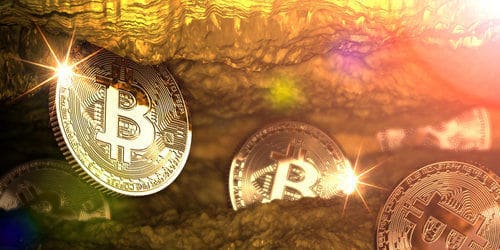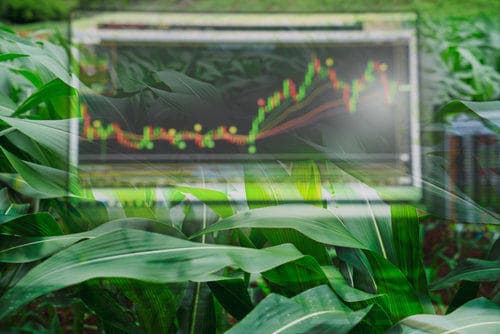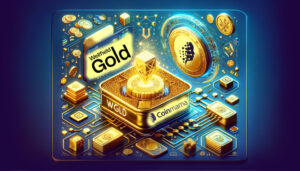If you want to buy Bitcoin (BTC), knowing how much it costs is a must. Checking the Bitcoin price is as easy as breathing, and something many Bitcoiners do almost as regularly! However, figuring out what price range represents fair value before you buy Bitcoin is much harder; some might even say impossible. And certainly, arriving at a sensible valuation for an entirely novel and technically-complex asset class like Bitcoin is no easy task, especially when you’re looking at a constantly changing Bitcoin market.
So, how can you tell when Bitcoin is fairly valued, when it’s cheap, and when it’s expensive? These are critical questions to answer for anyone looking to buy Bitcoin, to hold it, or to sell it. In this article, we’ll discuss an approach to figuring out what the Bitcoin price “should” be. This article’s purpose isn’t to convince anyone to buy Bitcoin, but rather to assist them in determining what BTC price represents fair value.
Defining Fair Value
Fair value is how the market would price an asset with all relevant information known by all market participants, and absent any manipulation. It reflects the supply of the asset balanced against the demand for it, as well as the asset’s usefulness and desirability.
Fair value is more of an ideal than a reality, given persistent informational asymmetries and market manipulation. (This is true of the Bitcoin market, where factors such as hype, regulation, and news of large buys often throws the BTC price onto a rollercoaster.) However, long-established and well-understood assets may be the closest reflection of fair value.
To better understand fair value, consider agricultural commodities; they’re some of the earliest traded assets, manipulation is likely low given the risk of public outrage that would follow any revelation of rigging in food prices, and relevant data (such as weather and harvest forecasts) is publicly disclosed. Furthermore, there aren’t too many murky geopolitical factors affecting farm production, as with commodities like oil. It’s likely therefore that the price of a commodity such as corn often trades close to its fair value.
Bitcoin is an entirely different matter! Cryptocurrency is a relatively new and therefore poorly-understood asset class. Furthermore, the Bitcoin market is infamously rife with manipulation. Bitcoin is also so complex and rapidly-evolving that relevant market information is often hard to access, much less verify. While it’s clear that Bitcoin has value, how to price that value remains opaque.
Bitcoin’s Value Proposition
Bitcoin has a range of interesting properties which give it value. Here are some of the major factors which affect how much you can buy or sell Bitcoin for:
1) Limited Supply
Scarce assets tend to be valuable assets. Endlessly reproducible pieces of paper or digital account entries only hold value because the powers that be have convinced enough people that this is indeed the case. Naturally scarce resources, such as precious metals, real estate, or even clean water, possess intrinsic value. By mathematically limiting the supply of Bitcoin to 21 million, Satoshi ensured that Bitcoin’s value would benefit from the effect of scarcity.
This scarcity property tends to go unappreciated in countries with no recent history of high or hyperinflation. In countries where the value of money is lost due to excessive issuance, such as Venezuela, demand for Bitcoin as a relatively stable store of value and medium of exchange is insatiable. As international central banks engage in quantitative easing and consider negative interest rates, perhaps the rest of the world will eventually come to appreciate monetary scarcity.
2) Extraction Cost

Bitcoin is known as “digital gold” for good reason; not only is it limited in quantity like gold, but it also takes costly work to mine. The basic costs of Bitcoin mining are fairly easy to estimate: the cost of efficient ASIC hardware added to its power consumption rate multiplied by local electricity costs. Such calculations, which we’ll cover in more depth later, establish a baseline value for Bitcoin based on its extraction cost.
Just as with gold, if the Bitcoin price falls below this extraction cost threshold, miners will suspend or shut down their operations. This will have the effect of reducing supply, thereby increasing scarcity and likely driving the price back up. In Bitcoin’s case, fewer miners will temporarily lead to slower transaction processing, but difficulty adjustments will compensate for this effect in time.
All this is to say that, contrary to what many critics claim, Bitcoin is indeed backed by hard resources: electrical expenditure and computational hardware.
3) Censorship Resistance
Money that can’t be frozen, seized, or sanctioned holds unique value to a range of people, from criminals evading the law to activists persecuted by tyrannical regimes. As governments are increasingly seeking to phase out cash and restrict their citizen’s ability to spend, move, or save their money as they see fit, censorship resistance is likely to become an increasingly useful aspect of Bitcoin. Even other governments can benefit from this property, as exclusion from the SWIFT payment system is becoming a geopolitical tool.
While this property is certainly good to have, it’s only a necessity for a small minority of users. One of the more famous examples would be Wikileaks, who were only able to receive Bitcoin when they got blockaded by fiat payment services, (such as banks, PayPal, and card companies) for distributing the “Collateral Murder” footage.
When Bitcoin’s the only money you can use, Bitcoin’s the only money you want! It’s really difficult to stop somebody who wants to buy Bitcoin from trading directly with another person. Similarly, it’s really difficult to stop a person who wants to sell Bitcoin for cash, or some other directly transferable asset, from doing so.
4) Trustlessness
Trust is becoming an increasingly rare commodity in our world. This interactive lesson in social game theory offers some insights into why that might be. Repeated interactions with the same person encourage trust formation, whereas we tend to interact with many more strangers these days. Furthermore, trust in corporations, governments, and other established authority figures is dwindling, particularly amongst the younger generation.
In this environment, a monetary asset which relies on the immutable laws of mathematics offers an intriguing alternative to entrusting one’s wealth to any particular group of humans.
5) Sane and Fixed Monetary Policy
Bitcoin has an advantage over central banks, in that its monetary policy is pre-determined and set in stone. Since the financial crisis in ’08, central banks have been experimenting with all kinds of radical policies, beginning with massive bail-outs for financial institutions at taxpayer expense, then moving on to bank bail-ins at depositor expense, Quantitative Easing (QE), Negative Interest Rate Policies (NIRP), and more.
Bitcoin’s strict 21 million issuance limit, irreversible transactions, open-source nature, and other non-negotiable principles represent a relatively firm foundation for long-term economic planning. The open and public way in which consensus is reached in Bitcoin is also a refreshing change to the secretive way in which central bank insiders formulate policy.
Bitcoin: Backed by the Cost of Electricity
It’s a common myth that Bitcoin “isn’t backed by anything.” However, nothing could be further from the truth. If Bitcoin miners were to all suddenly stop mining, the entire system would come to a screeching halt, with transactions unable to be processed. By design, Bitcoin’s Proof of Work blockchain is dependent on the ongoing efforts of miners around the world.
While there are some ideologically-motivated miners, the only thing keeping the vast majority of miners committed is the profit incentive. Miners invest resources to be rewarded with BTC, and are later able to sell Bitcoin for cash—and profit. It’s therefore fair to say that Bitcoin is backed by miner resources; primarily ASIC equipment and the electricity cost to run them, but also labor, facilities, HVAC costs, and so on.
In early 2019, JP Morgan estimated that efficient Chinese miners spend around $2,400 for each Bitcoin they mine. This seems like a reasonable estimate, as it matches the breakeven price reported for a low-cost American miner in mid-2018. Note that one cannot use the average national rate for electricity in such estimates, as power rates in industrial areas supplied by renewable energy are often 1/4th or less the average rate.
It’s significant that during the last major price crash in 2018, the Bitcoin price approached but did not fall below this $2,400 level (if it had, it would no longer have been profitable for miners to sell Bitcoin for cash). If presented with the opportunity to buy Bitcoin close to this threshold price (which will shift over time with Difficulty and power costs), that price range would seem to offer excellent value.
Bitcoin Market Price: Threshold + Utility + Speculation
So if we have a threshold price somewhere between $2,400 and $3,000, then how to justify Bitcoin’s value above this level? Well, first by mentally including the 5 value factors above, plus less significant additional factors. While there’s no established system for valuing these factors, any economic problem affecting a large number of people which can be solved by Bitcoin is likely to increase demand for Bitcoin.
Next, we need to add speculation into the equation. Speculation is the biggest wildcard and the source of much of Bitcoin’s volatility. The good news is that the waves of speculation tend to be cyclical and therefore somewhat predictable. We previously covered such cycles on the Coinmama blog with our article, When to Buy Bitcoin: a History of Bitcoin Market Cycles.



